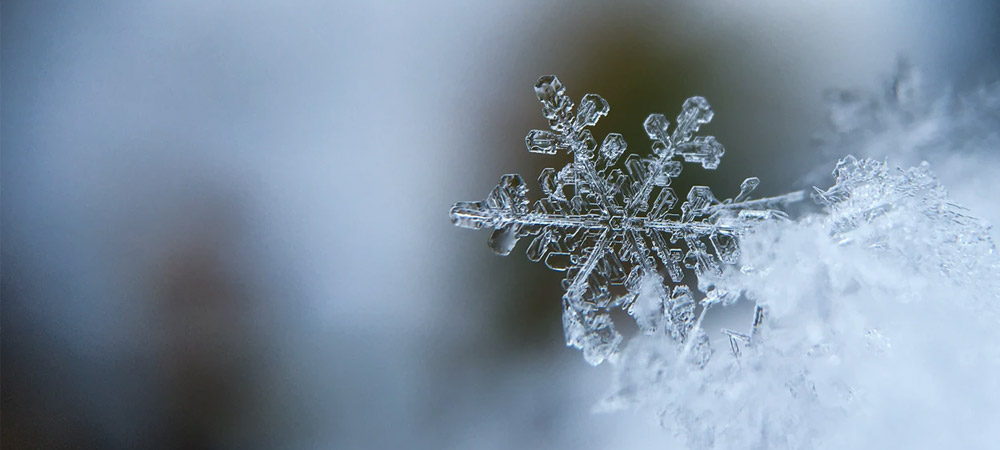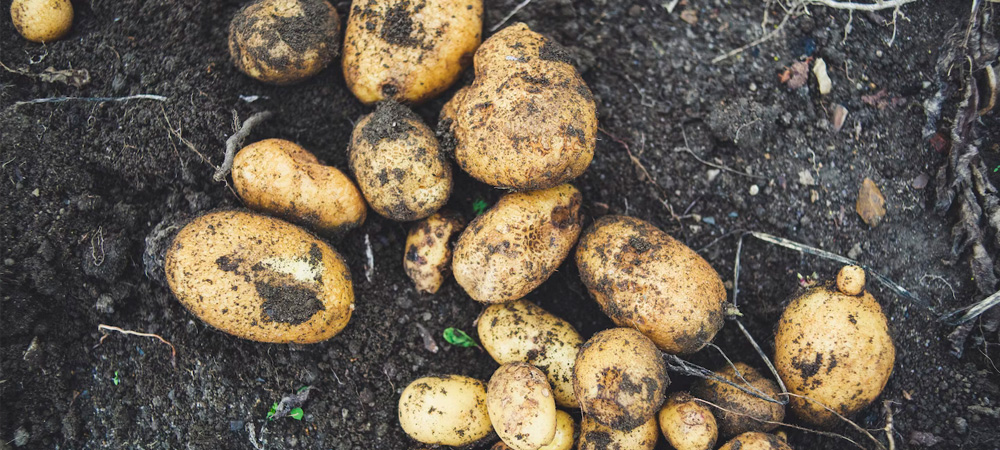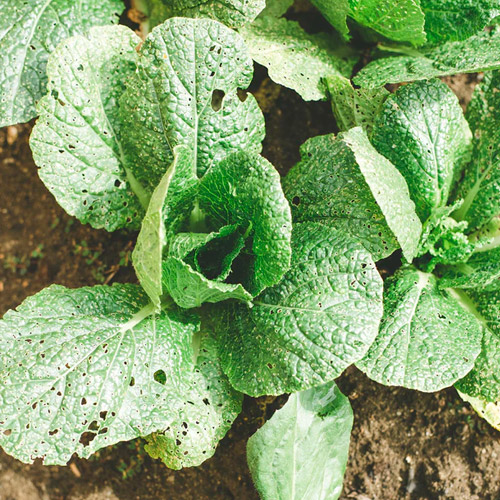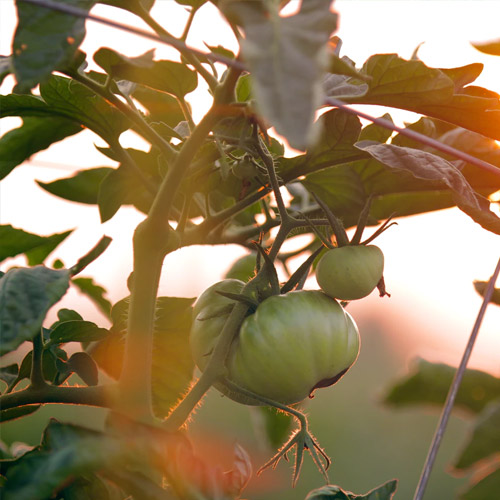What Can You Grow In the Greenhouse In Winter?

Clearly, a greenhouse is a valuable asset for any gardener as the growing season will be significantly extended. In addition, your plants will be much better protected from the elements. Your gardening goals as well as the climate you live in and the size of your space should help you determine which types of plants to grow in your greenhouse.
Winter Plant Growth - Expect Slow Progress
Even if you are using a greenhouse to grow your plants they will not grow as fast in the winter as they do in the summer. In fact, it may take twice as long for your plants to reach maturity in the colder months and some may not reach maturity at all! Even though you may not see a lot of growth, as long as they don’t die you can expect to see growth once it warms up. Don’t panic if your plants stop growing altogether in December and January. If you wait it out, you will start to see progress again as soon as the days start to lengthen and the temperature begins to increase.
Save The Plants from the Cold!
Insulate for Warmth
There are several ways to insulate your plants including fabric, straw and bubble wrap. All of these materials are effective at helping to keep your plants warm during the cold months. It is especially important to insulate your fragile seedlings.
Covering them up with fabric won’t heat them up but it is a simple and inexpensive way to minimize heat loss.
Straw can be a greenhouse gardener’s best friend. Spread it all over your greenhouse to reduce heat loss. This simple step could mean survival in the winter months for your fragile plants.
Use bubble wrap around the walls and frame of your greenhouse to keep the heat in during cold days. You can also get the warming benefits of bubble wrap by wrapping it around individual containers.
You can shop our range of greenhouse insulation here.
Electric Heaters
Electric heaters can be very useful in a greenhouse as the thermostats allow you to set the temperature exactly where you need it to be. If you get an eclectic heater with an automatic thermostat you can relax, knowing that your greenhouse will never drop below a set temperature. If you set your automatic thermostat to 2 degrees Celsius you can be sure your plants won’t freeze.
We have a range of greenhouse heaters for sale here.
Electric Heat Pads
To heat up your plants using an electric heating pad just place the pad under the containers in your greenhouse. Although this can be expensive if you have a lot of containers to heat, this type of heating is beneficial because it will heat up the roots directly and heating pads are easy to move around and store. You don’t need to buy a fancy heat mat, just the one you use for aching muscles will work fine.
Novel Eco-Friendly Idea - Warm Bottles
It is possible to keep your greenhouse warm simply by using plastic bottles! Paint several plastic bottles with black paint, fill them with water and place them all around your greenhouse. This will keep your greenhouse warm without the use of electricity because the black paint will absorb any heat the sun gives off during the day and then release that heat at night. This passive solar heating method works best in your aluminium or wooden greenhouse.
Organise Your Greenhouse
Chances are you will be planting several different types of plants in one greenhouse. This will require some planning. Try to choose plants that grow well together and have similar requirements, as far as temperature and light.
Artificial Lighting
As the days start to get shorter it will be important to ensure your plants are getting enough light. This can be done with the addition of grow lights, helping to supplement the light that all plants need to grow well.
Cold Tolerant Seeds
When you are choosing your seeds read the package to ensure you are buying ones that require a short growing season or are tolerant of cold weather.
Avoid Transplanting by Using Adequately Sized Pots
When winter gardening, you don’t want to cause any more stress to your plants than is absolutely necessary. Transplanting can cause trauma to your plants, so plant your seeds in the pots they will remain in whenever possible.
Which Plants to Grow in a Greenhouse In Winter
 Potatoes
Potatoes
Potatoes are great to grow in a winter greenhouse, but they will need to be covered or heated if the temperature gets too low in order to avoid frost. You can plant potatoes in January and enjoy them by March. Potatoes planted in February will do well in any Elite or Halls greenhouse until they reach maturity. Potatoes can be planted either in large buckets or plastic grow sacks.
Carrots
Take a look at your seed package when buying carrots to ensure you are buying a cold-hardy variety. Carrots can be planted in the fall and harvested when the ground thaws, even if this occurs before spring.
Cabbages & Broccoli
Cabbage and broccoli work well together as they both require temperatures of 45-55F at night and between 50-70F in the daytime. These are both cold weather vegetables and will not grow as well in hot temperatures. Start your cabbage and broccoli in midwinter. If you keep your greenhouse temperature consistent, they will grow throughout the winter.
 Lettuce and Greens
Lettuce and Greens
Lettuce and other greens can be great in a winter greenhouse if you buy the right ones. Check the package to make sure you are getting frost resistant varieties and plant more than one kind. If you plant lettuce and other greens in the fall and be careful with them (don’t transplant) they should do very well in the winter months. They will grow quickly, harvest the leaves as soon as they are large enough. There is no need to wait for full maturity.
Pak choi
If you enjoy stir frys this is the perfect vegetable to grow in your winter greenhouse! It doesn’t take long to grow and it is packed with vitamins. In only 30 days you should start to see the leaves and the plant will mature fully in 70 days.
Brussel sprouts
Brussel sprouts are the perfect winter garden vegetable. When planting Brussel sprouts keep in mind that they take about three months to grow, so if you plant in early January you won’t be eating Brussel sprouts until the end of March. Once they are about 2 inches in diameter, they are ready to harvest. Note - If you harvest those of the same size at the same time the uniformity makes them easier to cook.
Spinach
Spinach loves cooler weather and you will be able to harvest loads of it, especially if you plant successive crops. If growth slows down don’t panic, it will grow quickly again as soon as the temperature increases.
Garlic
When choosing the variety of garlic you will plant in your winter greenhouse look for the more tolerant hard-neck variety as opposed to the soft-neck. Plant your garlic in January and then move the pots outside once the temperature increases.
Herbs
There are several varieties of herbs that will do well in the winter. Coriander, dill, leaf celery, and parsley are all tolerant to cold. If you plant your herbs in late-fall you can have fresh herbs throughout the winter. Don’t worry when you notice their growth slow during cold winter days, you will see the growth increase as the temperature warms up.
Kale
If you love all the vitamins you get from kale you will be happy to know that the kale you grow during the winter months tastes sweeter than at any other time because it produces more sugar for protection! If the temperature drops below -6C (depending on variety) you will want to provide some heat for your kale.
Which Vegetables To Start In The Greenhouse in Winter
 Tomatoes
Tomatoes
Tomatoes are the most popular vegetable grown in greenhouses. Starting tomatoes in a greenhouse is helpful for tomatoes as the growing season is long. It will take four to six weeks for a tomato plant to be mature enough that it can be safely transplanted to the outdoors. Don’t put your tomato plants outside until night temperatures are higher than 55F. While your tomatoes are inside the greenhouse keep them warm and consider adding grow lights.
See our full guide on growing tomatoes in a greenhouse here.
Cucumbers
Similar to peas, you can start cucumber seeds in your greenhouse in late winter or early spring. If the temperature outside is consistently above 70F it is safe to transplant them.
Aubergine
Aubergine is similar to okra in that it requires a long warm growing season. It will be beneficial to start the seeds in mid-January and transplant in the spring.
Peppers
Peppers are great to plant with tomatoes as they require the same night-time temperature of above 55F. Any variety of pepper, from bell peppers to hot peppers, will do well in a greenhouse during all of the seasons as long as the temperature is warm enough.
 Squash
Squash
Like cucumbers and peas, squash can get a head-start by planting them in your greenhouse in the winter and waiting until it is sufficiently warm outside to transplant. Often squash cannot be grown without a greenhouse because it requires extra time to mature.
Early Peas
If you want delicious garden peas before anyone else, start your greenhouse peas in late winter and they will be ready for planting in early spring. Everyone else will have to wait until the ground thaws!
Okra
Okra often cannot be grown in cooler climates outside because it needs two months to mature and a warm soil temperature. Planting okra in your greenhouse first should give it the time it needs to thrive. Wait until the soil is nice and warm (65F) to transplant this vegetable outside.
We have a post on which vegetables to grow in a greenhouse when you're a beginner here.
Final Thoughts
If you want the perfect greenhouse to plant your dream vegetable garden, then checkout our range online here, including wooden and aluminium greenhouses.
You can learn how to grow grapes in a greenhouse here.
Not sure which greenhouse to buy? Checkout our handy greenhouse buyers guide here.
 Author:
Author: